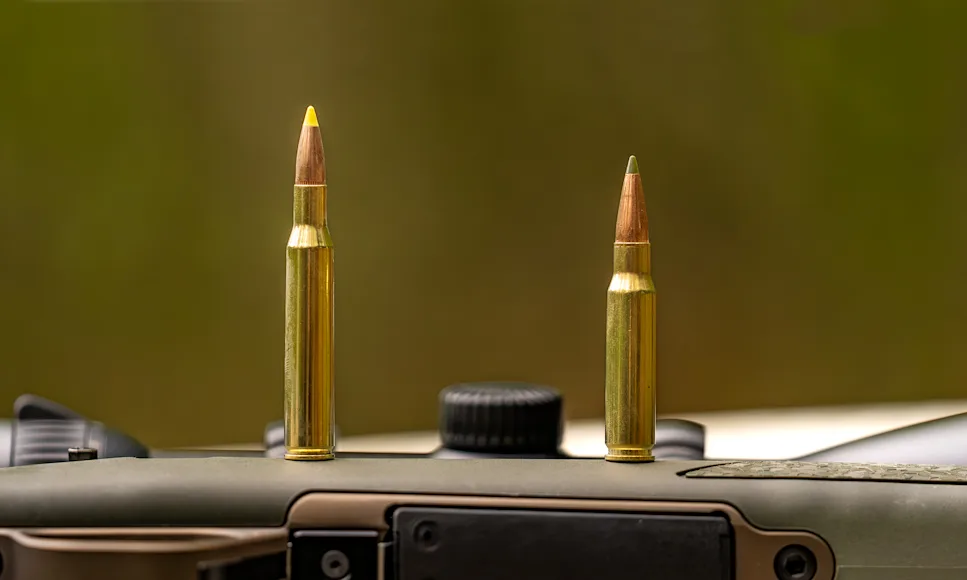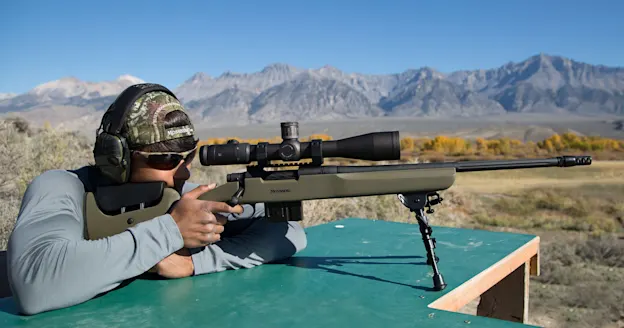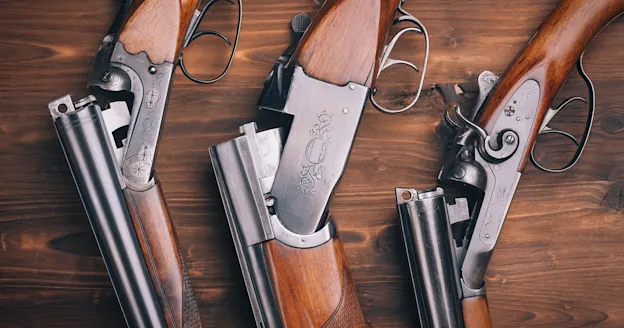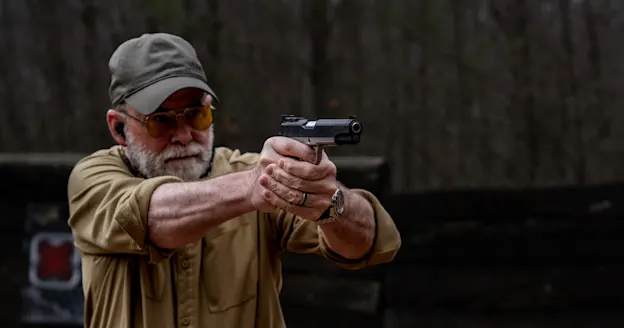We may earn revenue from the products available on this page and participate in affiliate programs. Learn more ›
My first centerfire rifle was a 270 Winchester. It’s the first rifle I learned to handload for and a rifle I shot a lot of deer with. Oddly, as much as I liked the rifle—and as great as the 270 is—I never developed any sort of emotional attachment to the cartridge. I think this was partly because of its popularity, but also partly because Jack O’Connor made it that way; the truth is, I was never a big fan of his. I’ve also never been fond of the 308 Winchester, at least not as much as I am of other cartridges, like the 223 and 35 Remington. However, by virtue of my vocation and my interest in scout rifles, I have a lot of experience with the 308 Winchester cartridge, too. When it comes to the 270 vs 308, neither touch my soul or tug on my heartstrings, and when it comes to comparing them objectively, that's probably a good thing. The fact is, they both work. And I trust them. When we pit these two cartridges against each other, though, there can only be one winner. So, let’s get into it.
270 vs 308: Table of Contents
The 270 Winchester
The 308 Winchester
The 270 and 308 Head to Head
270 vs 308: Ammo Availability
270 vs 308: Killing Ability
270 vs 308: Accuracy/Precision
270 vs 308: Effective Range
And the Winner Is…
Best Loads for Each
The 270 Winchester

This cartridge burst on the scene in 1925 as an offering for Winchester’s new Model 54 bolt-action rifle. It became popular, quickly, because it shot flatter than the 30/06, recoiled less, and killed critters just as dead. As far as I’m concerned, the 270 Winchester is the best thing the 30/06 has ever given us. (The 270 was based on a 30/06 case.) The 270 Winchester is not the fastest .277-caliber (true 7mm) cartridge available, but it is the most popular.

With modern projectiles, it’s best off with a 130- or 140-grain bullet at around 3000 fps. That’ll do for deer, elk, or moose (I shot my first moose with a 270), and most Americans will never shoot a critter larger than those. There are plenty of factory loads available for it, and its only detractor is that it requires a long action.
Related: 270 Winchester vs 7mm Remington Magnum
The 308 Winchester

At one time many believed a 150-grain .30-caliber bullet was all you needed for big-game hunting. Why? Because that was the original loading for the 30/06 Springfield. Introduced in 1952 for Winchester’s model 70, their groovy Model 88 lever-action, and their semi-automatic Model 100 rifles, the 308 Winchester became dizzyingly popular in short order. Some argued that it could not compete in terms of power to the 270 and 30/06. And the truth is, it can’t, at least on paper. However, in the field, critters do not notice the difference in 50 to 150 foot-pounds of fps of kinetic energy or velocity. The 308 Winchester offers an extremely balanced relationship of power and recoil. It also provides a flat enough trajectory to take you out to 300 yards and a little beyond without twisting turrets or fancy reticles. If it has a fault, I’m not aware of it.
Related: 6.5 Creedmoor vs 308 Winchester
270 vs 308 Head to Head

So how do these two cartridges stack up against each other? There are many ways to compare them. We’ll look at the availability of factory ammo, because most hunters do not handload. We’ll also look at killing ability based on experience with these cartridges in the field. We’ll consider precision, which is always important because when hunting, shot placement matters most. And finally, because hunters have been trying to extend the effective range of their rifles since the first rifle went afield, we’ll look at how these cartridges perform at distance, too.
270 vs 308: Ammo Availability

Next to the 223 Remington and the 6.5 Creedmoor, the 308 Winchester is the most popular centerfire rifle cartridge worldwide. Because of this, and the variety of animals you can hunt with the 308, there are more factory loads available for it than any other. Similarly, the factory loads are more diverse in application and price than with any other rifle cartridge. There are about three times as many factory loads for the 308 Winchester as there are for the 270 Winchester.
Advantage: The 308 Winchester, clearly.
270 vs 308: Killing Ability

I don’t know how you effectively measure this. Some consider kinetic energy the best measure while others think bullet weight or caliber is a better indicator. What I can do is speak from the experiences I’ve had shooting and witnessing a lot of animals shot with both cartridges. If there’s a difference, I’ve never been able to see it. And I’ll bet you a box of the best ammo for either cartridge that you can’t look inside an elk or deer shot with a 270 or 308 and determine which cartridge killed which critter. The 308 Winchester will handle heavier bullets, but with today’s modern projectiles, the slower-moving, heavier bullets offer no real advantage over premium mid-weight projectiles.
Advantage: Tie
270 vs 308: Accuracy/Precision

I’ve seen 270 Winchester rifles that would shoot lights-out, printing dime-sized groups at 100 yards. But I’ve seen 308 Winchester rifles that’ll do that at double the distance. The consensus is that the 308 Winchester is more inherently accurate than the 270. However, I believe if a talented rifle builder crafts a rifle for either cartridge and then uses handloaded ammunition tuned to those rifles, you’d have a hard time finding a winner. Still, there’s a reason the 308 Winchester has had a stellar career in precision shooting. The combination of the shorter and stiffer actions it can use, combined with its great efficiency, gives the 308 Winchester the edge. This is especially true with factory ammo and factory rifles, so we’ll give the 308 the ribbon here.
Advantage: The 308 Winchester
270 vs 308: Effective Range
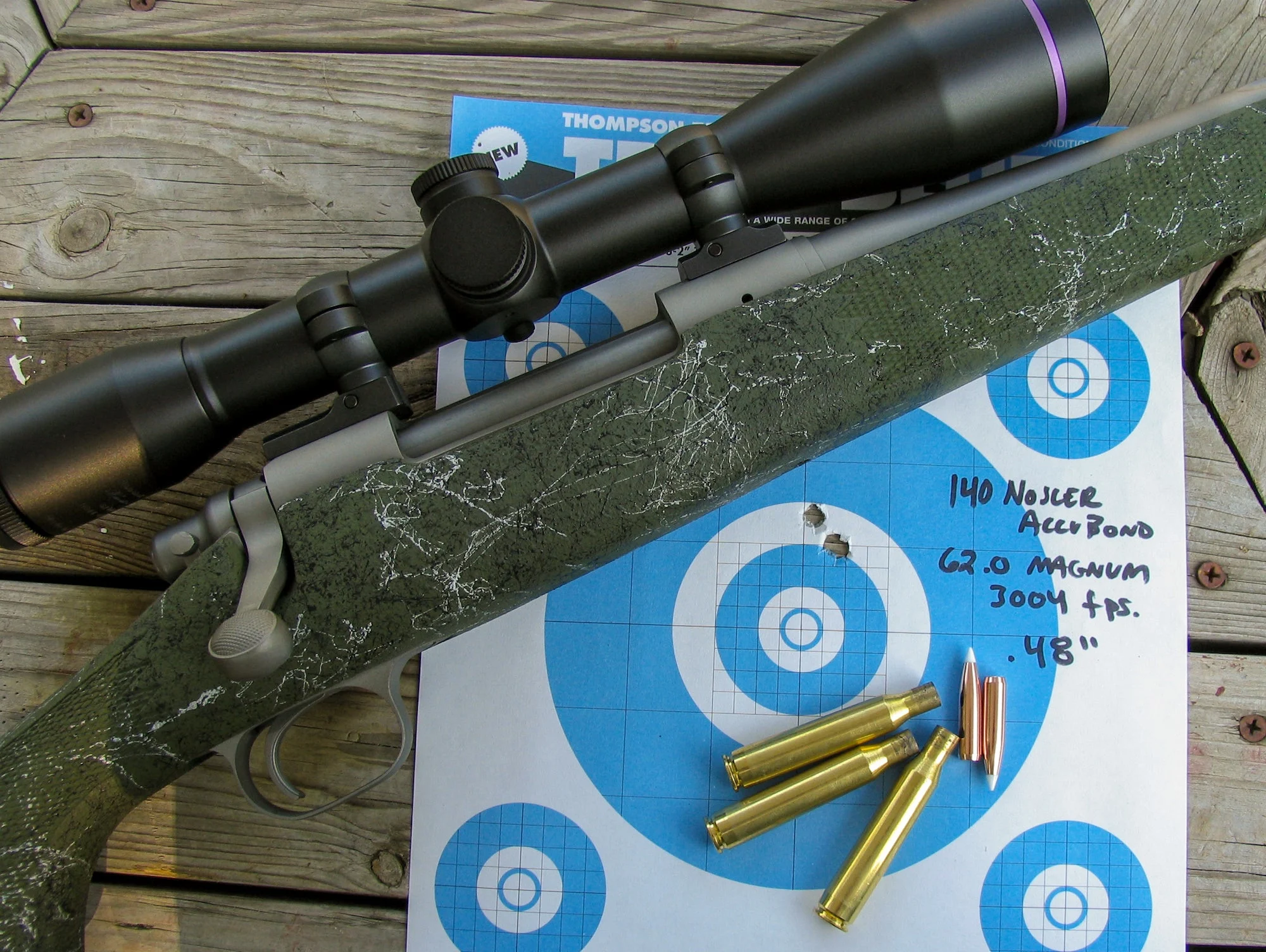
How do you determine the effective range of a cartridge? Short of shooting a generation’s worth of critters at different ranges and scientifically examining the results, we must rely on math and some common sense. I feel the best indicator of effective range is the maximum distance at which a bullet fired from a cartridge retains the ability to deform/expand on impact. Though it will vary from load to load, with the 270 Winchester, you can squeak out between 50 to 150 more yards before the impact velocity drops below the bullet’s upset threshold. This is partly because of the 270 Winchester’s faster muzzle velocity and partly because with the same style/weight bullets, .277-caliber bullets will have a higher BC. There’s no way around it; the 270 Winchester has the furthest reach.
Advantage: The 270.
Read Next: The 270 Winchester vs. the 7mm Remington Magnum
And the Winner Is…
As I see it, the 308 Winchester wins in the available ammunition and precision category, while the 270 has the edge in effective range. As for killing ability, they’re equal. Both cartridges recoil very similarly, but in the same style rifle, the 308 Winchester will weigh slightly less due to its shorter action and the larger hole in its barrel. If effective range means more to you than anything else, the 270 takes the trophy. But from all-around big-game hunting standpoint, the winner is the 308 Winchester.
I think the 270 Winchester is boring, and I find the 308 Winchester even more so. You’ll not win any style points around the campfire with either. However, style points don’t kill critters. Geoffrey Wayland, the best African PH I’ve ever hunted with, likes to see hunters show up with 270s or 308s because he knows both these cartridges work, and that neither kick so hard their owners are afraid to shoot them. Either will do just fine for all non-dangerous game the world over.
Best Loads for Both
Whichever one you choose, you'll want the best factory ammo loaded for it. So, what are the top loads for the 270 Winchester and 308 Winchester? Hell, there are a lot of them. But most hunters in American hunt deer, so let’s look at the best deer-killing loads for each cartridge. You might be surprised with the loads I’ve picked; they’re not fancy or expensive, but they work.
270: 130-grain Remington Core-Lokt

The 130-grain bullet has always been popular in the 270 Winchester, and for deer a 130-grain bullet is more than enough. You also do not need a tough bullet for deer; instead you want a lot of bullet upset. You’ll not find a more proven deer bullet for the 270 Winchester than the 130-grain Remington Core-Lokt. It’ll handle 270 Winchester velocities and wreck the inside of the biggest buck you can find. In 10% ordnance gelatin, the bullet will penetrate about 17 inches and upset with a frontal diameter of around 0.60-inch.
308: 150 Grain Remington Core-Lokt

For deer with the 308 Winchester, I prefer the 150-grain bullets. They have a bit more velocity to help with bullet upset and to wreck the vital organs of deer. No surprise here, for the 308 Winchester, the Core-Lokt gets the nod as well. Like with the 130-grain 270 Winchester Core-Lokt load, when shot into 10% ordnance gelatin the 150-grain Core-Lokt load for the 308 Winchester will retain about 70% of its weight, penetrate about 18 inches, and upset to a diameter of just a bit more than a half inch. If you can’ kill a deer with this load, you simply cannot shoot.

